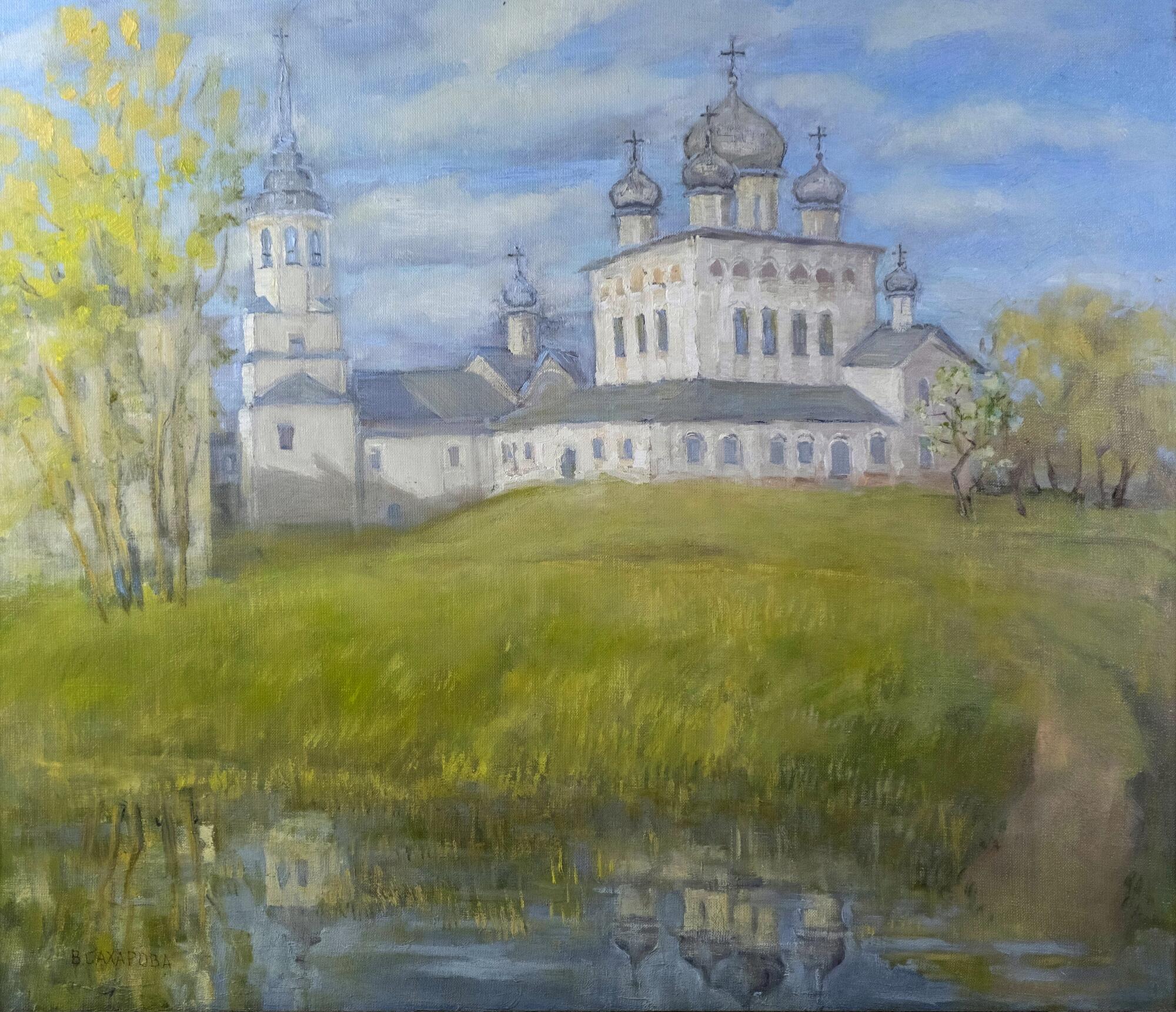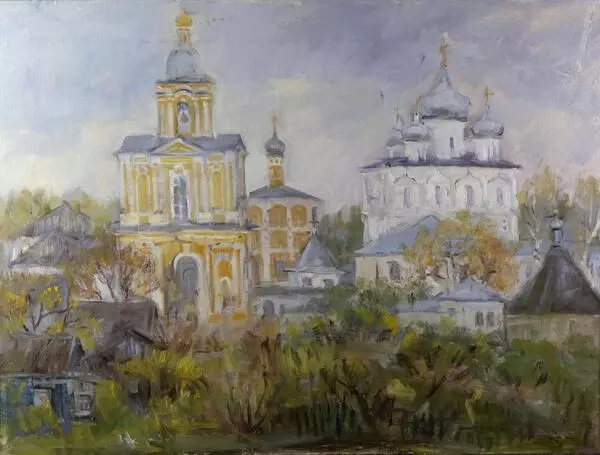A women’s diocesan school and two churches built at the turn of the 18th century are located on the bank of the Derevyanka (a channel between the Donets and the Volkhov rivers) in the northern part of Novgorod, where the road to the Khutyn Monastery lies. This is all that remains of the former Derevyanitsky Monastery. It was named after a small river Derevyanitsa, which flowed into the Volkhov. It has already dried up.
The first mention of the monastery in chronicles dates back to 1335 — the period when Pskov and Novgorod were under the control of Archbishop Moses. This date indicates that the archbishop commanded to build a stone church in honor of the Resurrection of Christ.
In addition to the Resurrection Church, also at the behest of the bishop, a stone church of the Assumption was later erected there.
A chronicle entry from 1414 describes a huge fire that engulfed the monastery, during which “the stone church of the Holy Theotokos was destroyed.” Judging by the mention of this very church in the Novgorod inventory of 1617, it was restored.
The archbishops of the Saint Sophia Cathedral in Novgorod retreated to the Derevyanitsky Monastery at the end of their lives. Describing the fire of 1414, a chronicle entry says: “Our archbishops’ final resting places were lost.” Archbishops Alexy, John, and Simeon were also buried there.
In the 16th century, in connection with the Livonian War and the fact that the Swedes captured Karelia in 1581, Tsar Ivan the Terrible ordered to send the monks of the Konevsky Monastery of the Nativity of Theotokos to the Derevyanitsky Monastery.
However, in the early 17th century, the Derevyanitsky Monastery itself was ravaged by the Swedish invaders. Back then, its entire ensemble, with the exception of a 14th-century stone church, was wooden: the church with an adjoining refectory, a gate church, monastic cells, and other areas.
The construction of a new church began in 1695. Construction enterprises (artels) of Nikita Kipriyanov and Foma Alekseyev were engaged in it; two years later the new church collapsed.
Three years later, by order of Metropolitan Job, the artels erected the Resurrection Cathedral with five domes on the same site.
In 1725, the stone Assumption Church with a bell tower and a large refectory were added to the architectural complex.
After the monastery was transformed into a nunnery in 1875, a women’s school (since 1882 — the Novgorod diocesan) was located on its territory in a specially built three-story stone building, and later an exemplary school (state schools with the best teachers and funding in the early Soviet Union) was opened.
In 1919, land, tools and money were seized from the monastery; in 1920, the monastery was abolished.
The first mention of the monastery in chronicles dates back to 1335 — the period when Pskov and Novgorod were under the control of Archbishop Moses. This date indicates that the archbishop commanded to build a stone church in honor of the Resurrection of Christ.
In addition to the Resurrection Church, also at the behest of the bishop, a stone church of the Assumption was later erected there.
A chronicle entry from 1414 describes a huge fire that engulfed the monastery, during which “the stone church of the Holy Theotokos was destroyed.” Judging by the mention of this very church in the Novgorod inventory of 1617, it was restored.
The archbishops of the Saint Sophia Cathedral in Novgorod retreated to the Derevyanitsky Monastery at the end of their lives. Describing the fire of 1414, a chronicle entry says: “Our archbishops’ final resting places were lost.” Archbishops Alexy, John, and Simeon were also buried there.
In the 16th century, in connection with the Livonian War and the fact that the Swedes captured Karelia in 1581, Tsar Ivan the Terrible ordered to send the monks of the Konevsky Monastery of the Nativity of Theotokos to the Derevyanitsky Monastery.
However, in the early 17th century, the Derevyanitsky Monastery itself was ravaged by the Swedish invaders. Back then, its entire ensemble, with the exception of a 14th-century stone church, was wooden: the church with an adjoining refectory, a gate church, monastic cells, and other areas.
The construction of a new church began in 1695. Construction enterprises (artels) of Nikita Kipriyanov and Foma Alekseyev were engaged in it; two years later the new church collapsed.
Three years later, by order of Metropolitan Job, the artels erected the Resurrection Cathedral with five domes on the same site.
In 1725, the stone Assumption Church with a bell tower and a large refectory were added to the architectural complex.
After the monastery was transformed into a nunnery in 1875, a women’s school (since 1882 — the Novgorod diocesan) was located on its territory in a specially built three-story stone building, and later an exemplary school (state schools with the best teachers and funding in the early Soviet Union) was opened.
In 1919, land, tools and money were seized from the monastery; in 1920, the monastery was abolished.






